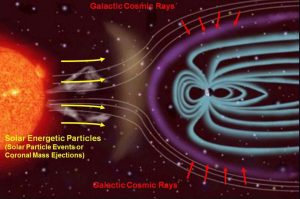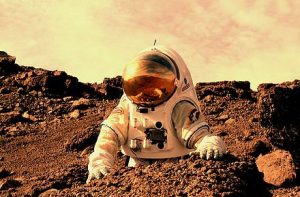Humans are getting closer to reaching their goal of becoming an inter-planetary species. NASA is under presidential orders to land humans on Mars by 2033. However, will astronauts be able to survive such a long and grueling journey? Little is known about the long-term effects of space travel on the human body. A one-way trip would take about seven months and a round trip could take well over three years, but the longest a human has continuously been in space is just over a year. Our bodies have adapted over millions of years to survive on earth and long-term spaceflight could weaken our immune systems, according to recent research led by the University of Arizona.
NK Cells and the Immune System
The immune system helps to fight infections and protect our bodies from illnesses. It is made up of many types of cells, including white blood cells which help destroy invaders and protect against diseases that can make us sick. One of these cells, called the NK (natural killer) cell, is especially important since it is responsible for killing infected/cancerous cells. NK cells are especially important during space travel since the body may be exposed to larger amounts of radiation and there is a possibility of increased cancer risk.

Astronauts in space will not be protected from radiation by Earth’s atmosphere. Courtesy of Wikipedia.
The research team tested the blood of astronauts who had been in space for at least six months and compared these test results to those of healthy individuals on earth. Results were taken before and after spaceflight, and even twice during the flight. What they found was shocking, the NK cells from blood taken during and after spaceflight were about 50% less effective than the NK cells from blood taken before spaceflight. Even blood samples taken 90 days into spaceflight contained NK cells that were much less effective. Richard Simpson, one of the authors of the study explained how NK cell activity decreased; “When we look at the function of the astronaut samples during flight compared to their own samples before they flew, it goes down. When we compare them to controls who stayed on Earth, it still goes down.”
Small Piece of the Puzzle
Safely transporting astronauts to Mars is no small task, and this highlights one of the many challenges faced by engineers and scientists. Problems that we consider small or things we take for granted have to be carefully thought out. Engineers have to invent solutions for problems that we may not see as problems. It is amazing how many factors are at play and must be accounted for when planning a project of this magnitude. Nevertheless, countless individuals are hard at work tackling numerous problems such as this. Simpson and his team are actively working to find a solution, hoping that a combination of nutrition and fitness can be used to keep NK cells effective. If successful, their hard work will contribute to one of the finest achievements of the human race.
-Sukhman Bhuller

